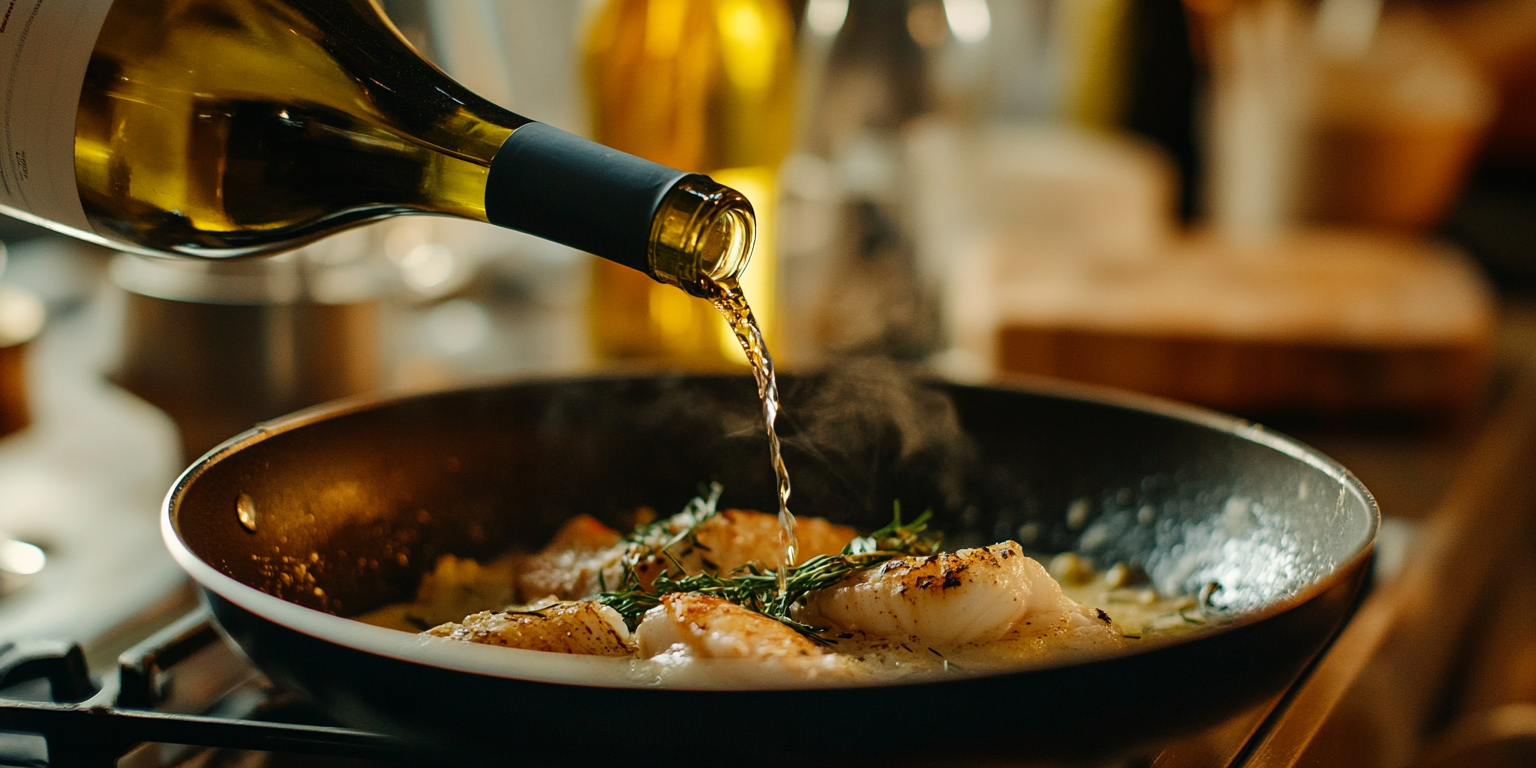Discover how wine and fusion food from different cultures come together to create surprising and delicious pairings that break from tradition.

Let’s start with one of the most pervasive myths: the idea that all alcohol evaporates during cooking. While it’s true that heat reduces the alcohol content, it doesn’t vanish entirely. Research shows that the amount of alcohol left in a dish depends on factors like cooking method, time, and temperature.
So, if you’re serving a wine-laced sauce to guests who avoid alcohol, consider this scientific nuance. Spoiler: it’s probably safer to avoid the flambé.
Those bottles labeled “cooking wine” sitting near the vinegar aisle might seem tempting, but don’t be fooled. Cooking wine is a culinary villain hiding in plain sight, loaded with preservatives, sweeteners, and salt. Imagine taking a fine dish and adding flavored seawater—hardly appetizing.
Instead, use wine you’d actually drink. It doesn’t have to be an expensive bottle (more on that later), but it should be something enjoyable. A good rule of thumb: if it’s not good enough for your glass, it’s not good enough for your pan.
The internet is rife with advice to never skimp on wine when cooking. Yet, unless your dinner guests have Michelin stars tattooed on their foreheads, there’s no need to break the bank. Moderate-priced wines in the $10–$15 range work beautifully. Cooking alters a wine’s flavors—delicate notes of elderflower or hints of cedar will often fade under heat. What matters more is balance: wines that are overly sweet or overly tannic can dominate the dish. Stick with wines that complement rather than clash. Save your pricey Bordeaux for sipping, not simmering.
This classic guideline oversimplifies the art of pairing wine with food. While there’s truth in the idea that red wine’s tannins complement the robust flavors of red meat, and white wine’s acidity works well with fish and poultry, it’s far from a hard rule.
Pouring wine willy-nilly into a pan is a recipe for disappointment. Timing is everything when cooking with wine, as the alcohol needs time to integrate into the dish.
The best practice? Add wine during the middle of the cooking process for a balanced result.
If you’ve ever puckered at an overly tannic wine, you know the power of these bitter compounds. Tannins, found in red wines, concentrate during cooking and can turn a dish bitter if overdone. To avoid this, steer clear of highly tannic wines like Cabernet Sauvignon for delicate dishes. Instead, opt for reds with moderate tannins, such as Merlot or Grenache. If you’re unsure, you can always reach for a safe, food-friendly option like Pinot Noir.
Wine may improve with age in the bottle, but once it’s opened, the clock starts ticking. Oxidation alters the flavor, and after a few days, even a decent wine can turn sour.
Pro tip: Freeze leftover wine in ice cube trays. These handy wine cubes are perfect for adding a splash of flavor to sauces and soups on demand.
To elevate your culinary game, keep these tips in mind:
Cooking with wine isn’t just about adding a splash of liquid—it’s about layering flavors and enhancing dishes with depth and complexity. By busting myths and understanding the science, you’ll be better equipped to wield wine like a pro in your kitchen.
So, grab a bottle (or two), experiment, and don’t be afraid to get creative. After all, cooking with wine should be as fun as drinking it—just maybe not at the same time. Cheers to delicious meals and myth-busting!
Dive into the heart of innovation with our 'Coding Chronicles' blog section. Explore a rich tapestry of articles, tutorials, and insights that unravel.